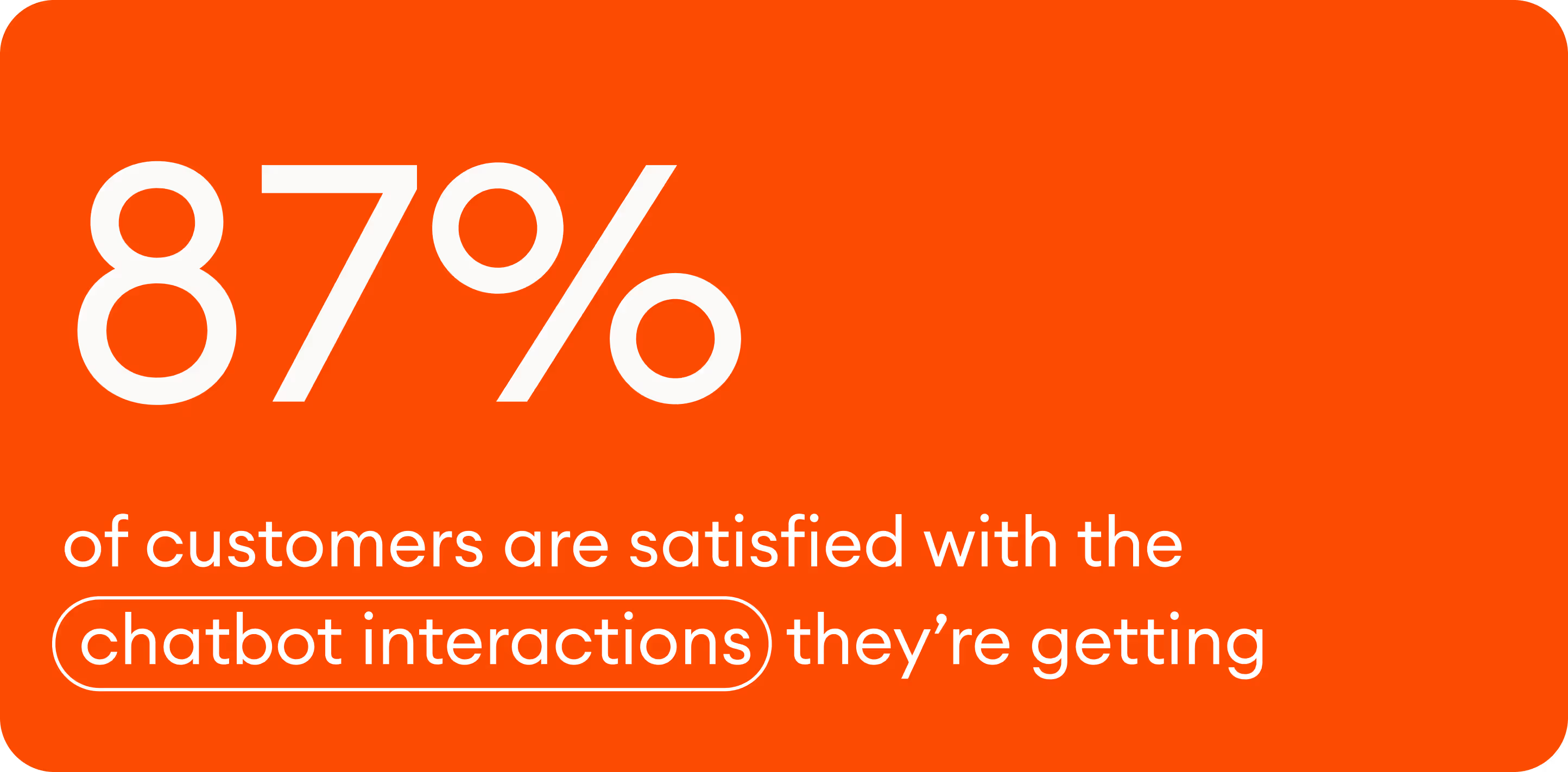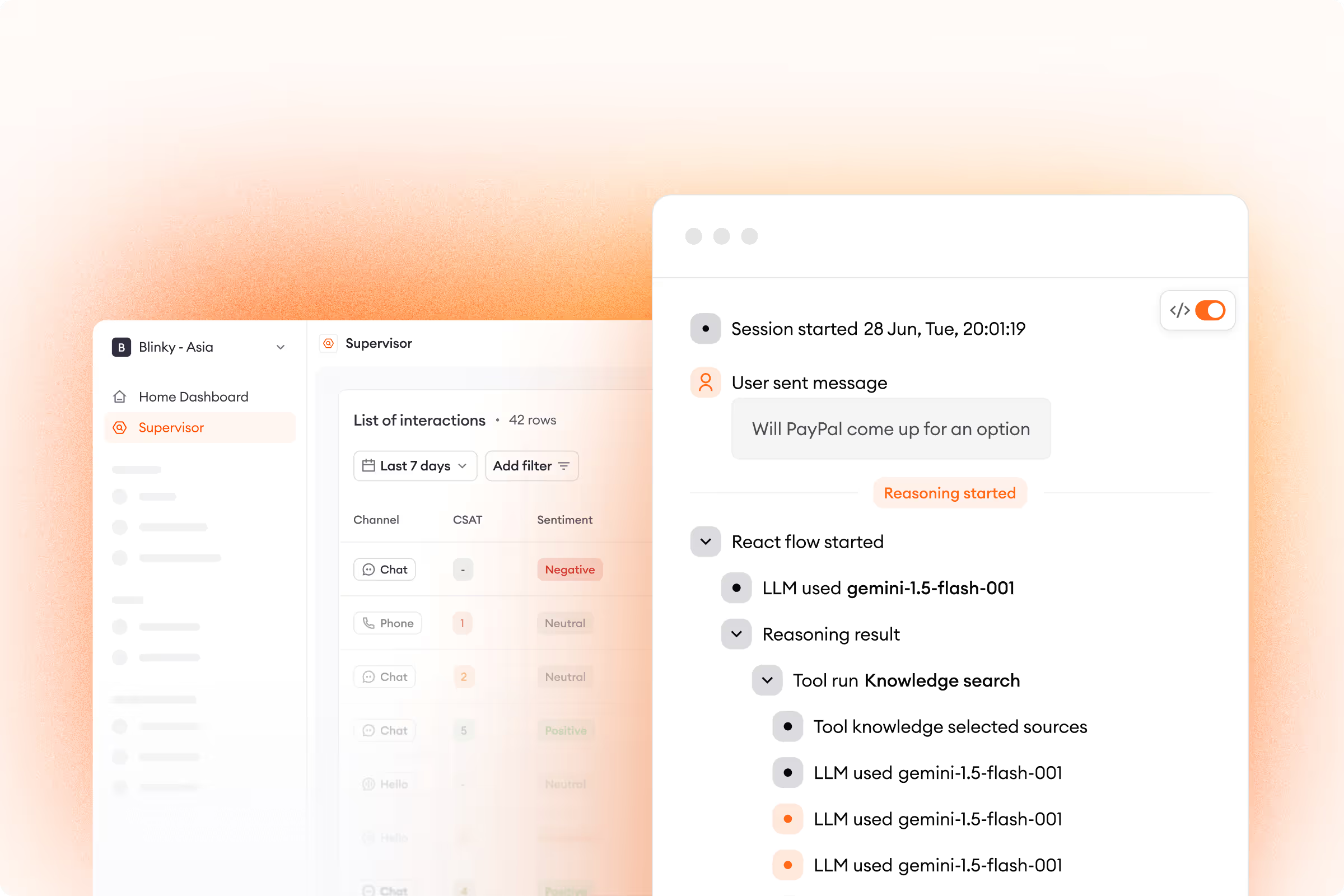On average, businesses see 17,630 customer support tickets per month. With an industry-standard average handle time of 6 minutes, companies are already spending over 100,000 minutes each month talking to customers.
Such a workload can strain the best teams.
But imagine if there was a way to eliminate 70% of those tickets — saving you roughly 74,000 minutes each month — in one Thanos-style snap.
Think of all the resources and energy you’d wind up saving.
We’ve got good news. To make this dream a reality, you don’t need to hunt down any Infinity Stones — all you need is an enterprise chatbot.
While chatbots have already been embraced by smaller companies, larger players are the ones who truly stand to benefit from automation technology. For them, chatbots can shave off weeks of work and millions in costs each month.
How? Use this guide to understand what enterprise chatbots are and how they can transform the customer experience for leading businesses.
What are enterprise chatbots?
Enterprise chatbots are programs that automate customer interactions and mimic human conversations with a large enterprise’s users. They allow companies to automatically respond to questions and deliver effective, high-quality customer support, often without involving a human agent.
Enterprise chatbots can automatically scan sources like a business’s FAQ page to deliver instant and accurate responses 24/7. And as a whole, they’re so effective that over 87% of customers are satisfied with the chatbot interactions they’re getting.

Enterprise chatbots vs AI chatbots: what’s the difference?
The main difference between enterprise chatbots and artificial intelligence (AI) chatbots comes down to their capabilities.
Many enterprise bots rely on predefined answers and workflows to reply to users’ questions.
Meanwhile, AI chatbots use machine learning and natural language processing (NLP) to understand what people are writing and generate natural, human-like responses. AI chatbots can also learn from each interaction to become more effective over time.
It’s important to remember that enterprise and AI chatbots aren’t mutually exclusive. Leading enterprise chatbots incorporate conversational AI, technology that simulates human language.
Common use cases of AI enterprise chatbots include comprehending misspellings, translating foreign languages, and generating recommendations based on incoming questions to self-improve recognition and automated resolution rates.
When analyzing different enterprise chatbots, it’s vital to know what AI they’re leveraging and how they’re using it.
To see how logistics leader InPost cut support phone calls by 25% with an enterprise chatbot, read our customer success story.
How much do enterprise chatbots cost?
Enterprise chatbots don’t have to break the bank. While chatbot prices can vary drastically, the following criteria play a large role in determining how much a given solution costs — and if it’s worth the price tag.
1. The type of chatbot
There are two main kinds of chatbots: rule-based chatbots and AI chatbots.
Rule-based chatbots rely on predefined buttons or keywords to answer simple questions. To get assistance, customers can only click or tap the options a chatbot offers them or ask the exact questions that the bot was trained on.
These chatbots require more back-and-forth to resolve customer questions, often driving costs up.
In contrast, AI chatbots can recognize conversation patterns, interpret user input, and deliver human-like responses. Just feed them your knowledge base, and they’re able to assist in a wide range of matters. This leads to faster responses and resolutions, both of which equate to cost savings.
2. The chatbot’s features
AI chatbots can handle a range of functions. Some that have the biggest impact on automation potential — and help drive costs down — include:
- Personalization options: Chatbots don’t have to give every customer a standardized response. Built-in data tracking can recognize customer data and create customized product recommendations relevant to each shopper.
- Multilingual capabilities: As growing brands attract a global audience, they’ll want a chatbot that can speak to customers in their preferred language. Leading enterprise solutions enable you to instantly translate your entire chatbot into hundreds of different languages, offering 24/7, international support with limitless scalability.
- Sales generation possibilities: Proactive messaging and buying intent detection give businesses more opportunities to sell via chat. Engaging conversational flows can increase conversion rates along with customer satisfaction and retention.
- Omnichannel connectivity: If you offer customer service across chat, email, social media, and more, the last thing you want to give shoppers is an inconsistent customer experience. Chatbot solutions sync your support channels, letting you streamline your help desk and keep operational costs in check.
- Generative AI functionality: Today’s best enterprise bots can craft unique messages on their own with minimal input from human agents. Simply tell the tool what length, tone, and style you’re looking for, and conversational AI can create unique answers to customer prompts right on the spot.
3. Your incoming traffic
The two most common ways to pay for an enterprise bot are a pay-per-interaction model and a pay-per-automated resolution model.
In a pay-per-interaction model, you’re charged every time the chatbot interacts with a customer, even if the chatbot’s answer isn’t helpful and handover to a live agent is still needed.
With a pay-per-automated resolution model, you’re only charged when the chatbot fully resolves a customer ticket without any human interaction. In other words, you only pay when the chatbot effectively does its job.
Looking to buy an enterprise chatbot? Here are 5 steps for finding the right one.
Understanding the benefits of enterprise chatbots
Enterprise chatbot platforms can unlock major benefits for your business. Here are the biggest:
1. Greater efficiency
AI chatbots free up a business’s customer support team to work more productively and deliver a higher-quality level of support.
With the bulk of your repetitive tasks fully automated, agents now have the time they need to help with more complex cases. This helps to keep both business costs and response times in check.
With an effective enterprise chatbot, businesses can consistently deliver top-quality service no matter how many customer queries get asked. Whether a company is seeing seasonal peaks or sustained growth, a chat solution gives support teams limitless capacity.
2. Higher user engagement
Enterprise chatbots can mimic your business’s tone and style, serving as a natural extension of your brand. By letting your brand voice shine through, they make interacting with your company a more pleasant user experience. That’s why customer engagement typically rises when businesses start using a chatbot.
Advanced solutions even increase user engagement by pinging customers while they shop, proactively reaching out to suggest products, gather feedback, and prompt returning visitors to continue where they left off. With more engaged users, you’ll see higher customer satisfaction as well as growing conversion rates.
3. A simplified buying process
Virtual assistants can do much more than answer questions. Taking their comprehensive functionality into account, one can see how AI-powered chatbots can make the whole buying experience much smoother.
These self-service tools accomplish this by acting as personal shoppers that help customers find the precise items they’re looking for. They can also step in and offer guidance any time customers are stuck on your website or appear to be going back and forth between two different products.
When a product is selected and a buyer is ready to pay, enterprise chatbots can expedite checkout thanks to their ability to track a customer’s shipping data. Even once transactions are complete, automation solutions can offer real-time order tracking and deliver updates, further boosting customer trust.
How to monitor and maintain enterprise chatbots
Monitoring and maintaining your enterprise chatbot platform doesn't have to be complicated or time-consuming.
Leading enterprise tools are no-code solutions, meaning no IT support is needed when it comes to set-up, onboarding, or maintenance. The best options have plug-and-play capabilities and get up and running in hours, not days or weeks.
AI-powered enterprise chatbots can automatically train themselves on previous interactions. By analyzing customer feedback, for example, they can pinpoint customers’ greatest pain points and either suggest changes for existing automations or propose new automations altogether to address those very issues.
Moreover, a centralized dashboard can complement your chatbot by tracking automation rates along with every agent interaction. As your personal command center, it lets you dive into your support metrics and gain actionable insights that promote data-driven decisions.
Zowie: your ultimate enterprise chatbot solution
Enterprise chatbots are game-changing solutions that are reshaping customer service as we know it. As the AI technology that powers them gets more powerful, they’ll only become more capable of bringing meaningful benefits that customers, support teams, and businesses all feel.
Zowie is an enterprise chatbot solution built specifically for ecommerce brands that want to maximize their efficiency and generate more sales.

.avif)







